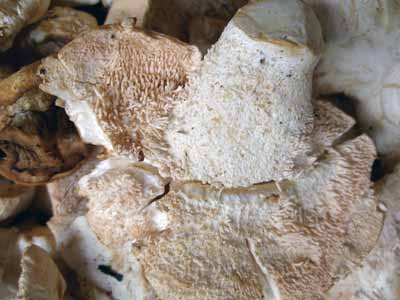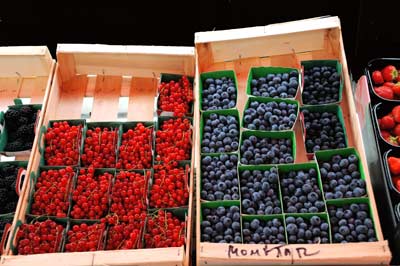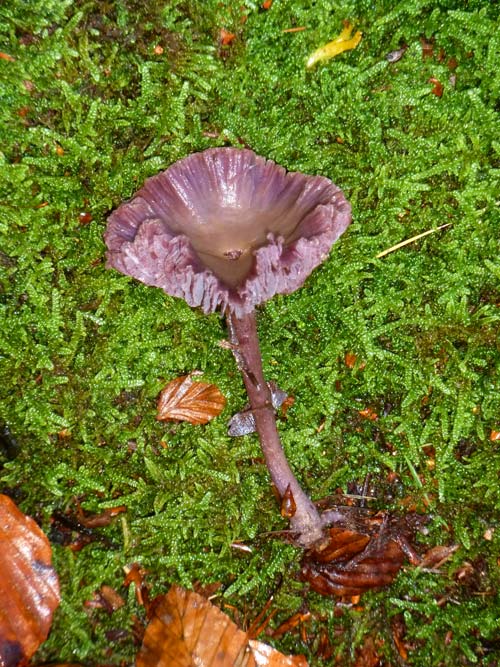
Hedgehog fungus as it is known botanically rather than in any culinary setting. Cream-coloured mushrooms, excellent to eat, easily found in woods from late summer to late autumn (US: fall). They have a sort of downy white stem leading up to a white cap which is centrally depressed.
Crowberry. A berry rather similar to cranberries but with a black skin, found growing on a shrub in the hills of northern Europe.
Crow garlic. The botanical, rather than culinary, name for a form of garlic which is more a weed than a culinary gift. It's aftertaste is relatively bitter, and it imparts a garlic flavour to the meat of animals which graze wehre it is prevalent. It is invasive in some areas.

American blueberry, which is larger and with less flavour than the northern European varieties, particularly those from Nordic countries. The American blueberry is available commercially and is a cultivated berry for the market. The berries of Nordic countries are harvested 'wild' or in managed woodlands but still from wild stock plants. If Nordic berries are available, they will be labelled as Scandinavian or wild or Swedish blueberries and will be worth paying the extra money for. As with many berries, the hours of exposure to light, rather than warmth, are what informs the intensity of the flavour.
"American pike-perch." Walleye. A fish from the northern lakes of North America which has a texture similar to trout. It is so-called because of the appearance of the eye on cooking. It closely resembles the pike-perch of northern European waters.

Amethyst deceiver. It may be cooked with other mushrooms in a mixed mushroom stew or served as a garnish to other dishes.